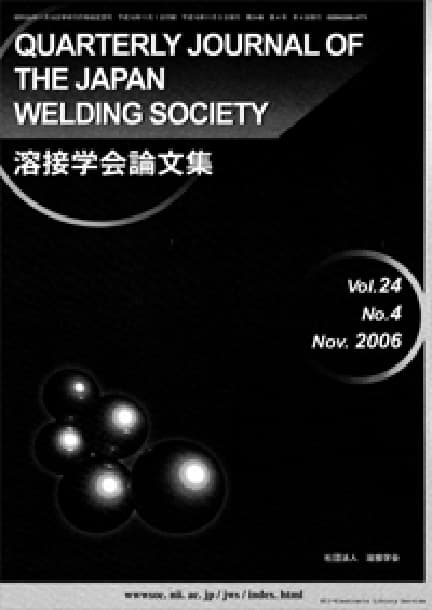The present paper describes the quality and its improvement of friction welded joints between a rectangular section bar and a circular section bar. Three kinds of rectangular section bars with different aspect ratio were used for the experiment. The rectangular section bars and circular section bars were joined by using a continuous drive (brake type) friction welding machine with an electromagnetic clutch in order to prevent a braking deformation during rotation stop. The low heat input friction welding method (LHI method) was used for joining.
The following conclusions were given.
(1)The first phase of the friction stage was composed of wear and seizure stages. This result was similar to the join of circular section bars of same diameter.
(2)When the areas of the weld faying surfaces were same each other, the initial torque and the elapsed time for initial torque hardly changed in spite of the aspect ratios of rectangular section bars.
(3)The welded joints obtained only the first stage (up to initial torque) had 100% joint efficiency, but fractures occurred between the welded interface and base metal. When small aspect ratios of rectangular section bars and a circular section bar were welded, several joints fractured at the base metal although they had a little defect in the welded interface.
(4)When the joints were made by the LHI method in Ar atmosphere, the welded joints had 100% joint efficiency, but fractures occurred between the welded interface and base metal.
(5)The welded joints had 100% joint efficiency and fractured at the base metal when the joints were made by the LHI method with adding forge pressure (improving LHI method). On the other hand, most of the welded joints made by the conventional method with forge pressure had fractures occurred between the welded interface and base metal.
(6)The improving LHI method has more advantages than those welded by the conventional method, i.e., less burn-off, less burr and less deformation of welded interface area. As a conclusion, it was clarified that the improving LHI method is the most effective friction welding method for rectangular section bars and circular section bars.










